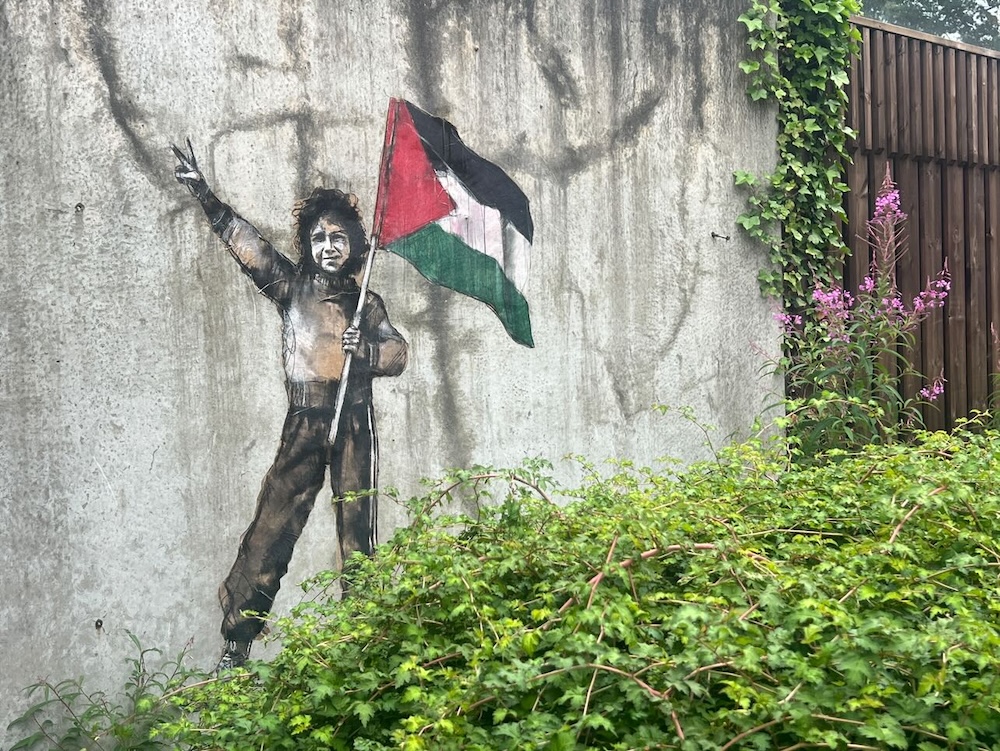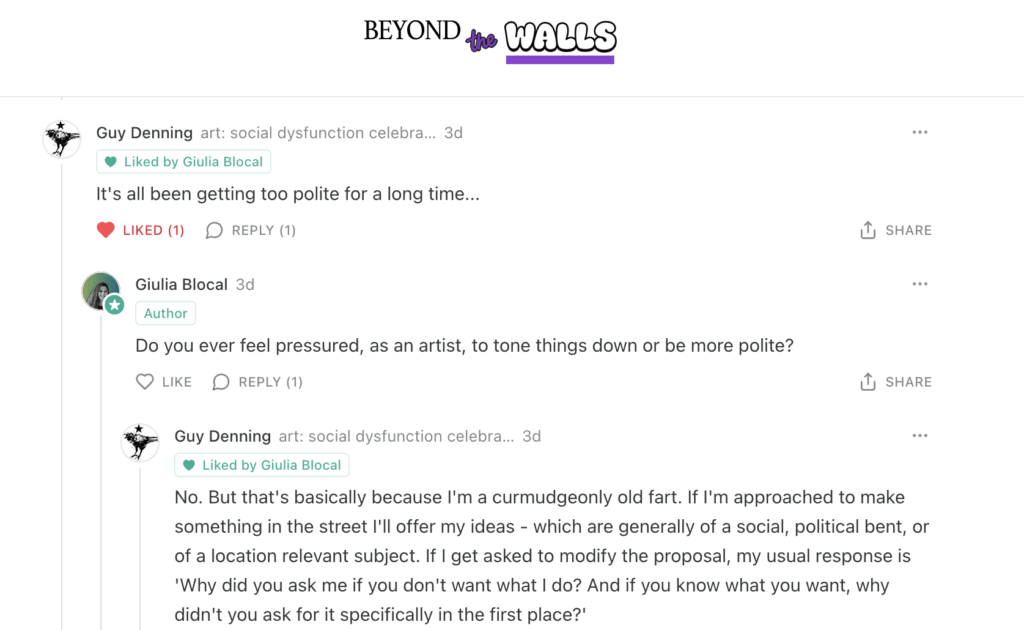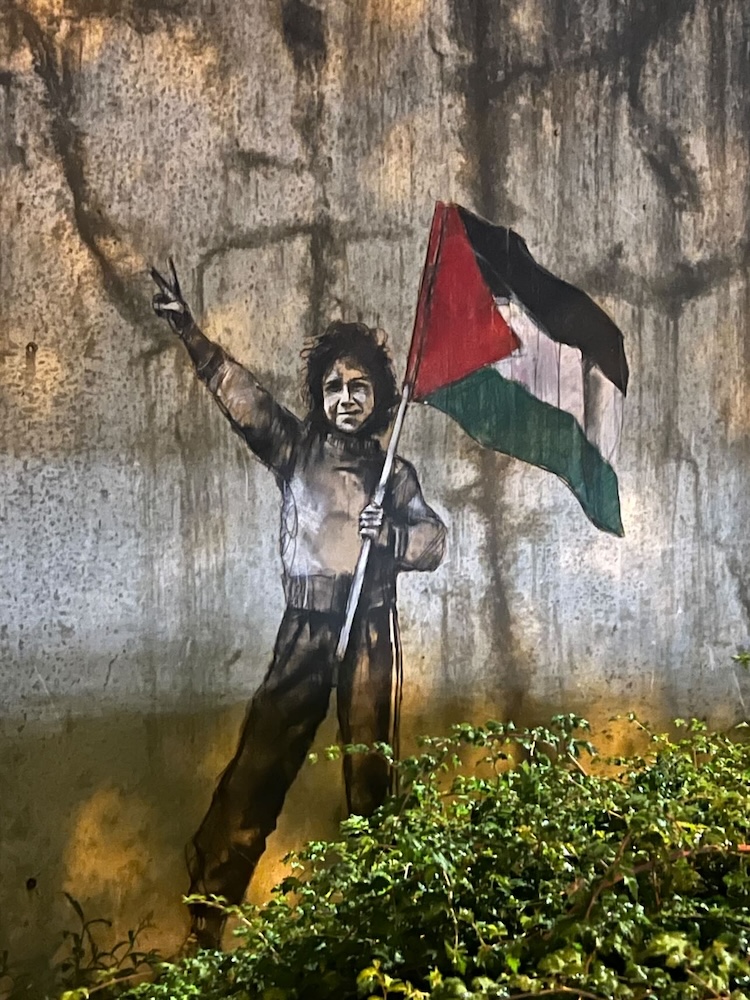We must keep talking about Gaza. In the face of ongoing violence and systemic destruction, silence is complicity. Public space has long been a place to bear witness, and in moments like this, it becomes crucial to use that space to say something.
That’s why a hand-drawn paste-up by English street artist Guy Denning, recently placed opposite Stavanger’s main hospital, carries more weight than its modest size might suggest. It’s not just an artwork; it’s a political act, a public refusal to look away.
In August’s newsletter, I wrote about how much of today’s street art has lost that edge. It’s been absorbed into the machinery of urban branding: polished, curated, sanitized, and repackaged as decoration. What once was an act of resistance has been turned into a tool for urban renewal and, in many cases, gentrification.
In the comments to that post, English street artist Guy Denning replied that yes, it’s been getting too polite for a long time.
Three days later, that same Guy Denning was back on the streets with a raw, unsanctioned piece rooted in urgency and protest. Not only was the message clear, but its placement was deliberate: just across from Stavanger’s main hospital, a nod to the destruction of those in Gaza.
This wasn’t part of a street art festival or a commissioned wall. It was carried out under the looser, more spontaneous umbrella of the “new” Nuart Festival—though there’s nothing truly new about it.
What curator Martyn Reed is doing in Stavanger today is, in fact, a return to his original vision. Before Nuart grew into a global brand and “street art festivals” became annual fixtures on tourism calendars, Martyn was inviting artists to reclaim space and speak out. Now, once again, he’s (un)curating the streets without walls, scaffolding, or PR gloss—just raw, meaningful gestures in public space.
“Street art was and is always more than authorised decoration,” Guy Denning wrote when he shared the image online.
And he’s right.
This piece, and the context in which it appeared, are proof that street art can still be what it was meant to be: unsanctioned, urgent, and uncomfortable. A tool for expression and confrontation, not beautification.
The roots of street art lie in protest and community-driven action. And there is no more urgent cause today than the one unfolding in Gaza. If street art still wants to claim its activist soul, this is where it should be looking. Not to glossy walls with brand logos in the corner, but to the streets—unfiltered, unauthorised, and unafraid.
Guy Denning’s intervention, and Martyn Reed’s support to make it happen, are signs that all is not lost. That this medium can still carry weight. That someone, somewhere, is still fighting back.


